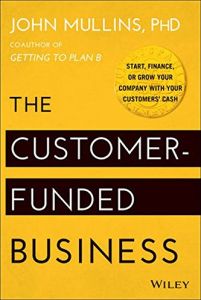Join getAbstract to access the summary!

Join getAbstract to access the summary!
John Mullins PhD
The Customer-Funded Business
Start, Finance, or Grow Your Company with Your Customers’ Cash
Wiley, 2014
What's inside?
Using customer cash may be the smartest way to launch and build your business.
Recommendation
When Michael Dell built computers in his dorm room in the 1980s, his customers paid him in advance. When apparel retailer Banana Republic first opened, it charged $1 a copy for its catalog and used the proceeds to build its inventory. Both companies exemplify what management professor John Mullins calls “the customer-funded business,” a commonsense approach to financing a company that avoids needed venture capital and bank loans. Instead, savvy entrepreneurs use their customers’ money to fund their growth. Mullins makes a compelling case for his model and its variants, and he illustrates the strategy with real-world examples. getAbstract recommends his guidebook to entrepreneurs curious about this alternative way to finance new ventures.
Summary
About the Author
John Mullins, PhD, is an associate professor of management practice at the London Business School. He is the author of The New Business Road Test and co-author of Getting to Plan B.



















Comment on this summary